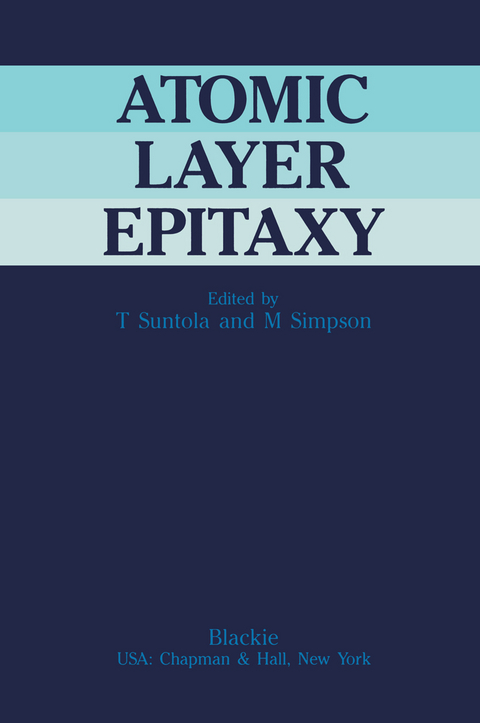
Atomic Layer Epitaxy
Springer (Verlag)
978-94-010-6661-7 (ISBN)
1 Chemical aspects of the Atomic Layer Epitaxy (ALE) process.- 1.1 Introduction.- 1.2 Requirements for ALE growth.- 1.3 Source materials used in ALE.- 1.4 Doping of thin films.- 1.5 Growth of thin films.- 1.6 Concluding remarks and outlook 36.- References.- 2 Theoretical aspects of ALE growth mechanisms.- 2.1 Introduction.- 2.2 Theoretical methods.- 2.3 ALE systems.- 2.4 Conclusions 60.- References.- 3 Comparison of ALE with other techniques.- 3.1 Inroduction.- 3.2 MOVPE.- 3.3 Molecular beam epitaxy.- 3.4 Hybrid areas.- 3.5 Comparison of MOVPE, MBE and ALE.- References.- 4 ALE of III-V compounds HO.- 4.1 Introduction.- 4.2 Self-limiting mechanism.- 4.3 Experimental approaches for ALE of III-V compounds.- 4.4 Review of experimental results.- 4.5 Potential applications of ALE.- 4.6 Conclusion 152.- References.- 5 ALE of II-VI compounds.- 5.1 Introduction.- 5.2 ALE.- 5.3 Reflection high energy electron diffraction (RHEED) observation.- 5.4 Characterisation of ALE-grown Zn chalcogenide layers.- 5.5 Summary 177.- References.
| Zusatzinfo | 280 p. |
|---|---|
| Verlagsort | Dordrecht |
| Sprache | englisch |
| Maße | 152 x 229 mm |
| Themenwelt | Technik ► Elektrotechnik / Energietechnik |
| Technik ► Maschinenbau | |
| ISBN-10 | 94-010-6661-2 / 9401066612 |
| ISBN-13 | 978-94-010-6661-7 / 9789401066617 |
| Zustand | Neuware |
| Haben Sie eine Frage zum Produkt? |
aus dem Bereich


